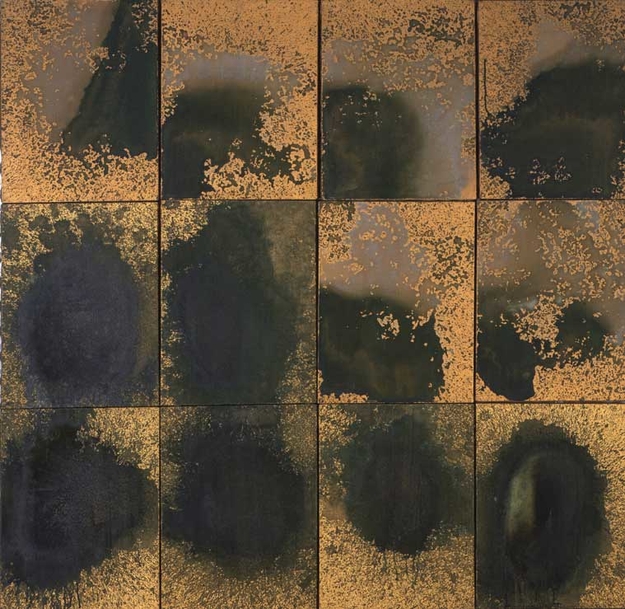In December of 1977, Andy Warhol began to create a new series of elegant abstractions called Oxidation Paintings. Quite different from the stylized images found in his Pop vocabulary, the only actual paint and original coloring in these work is that of a copper-based metallic lacquer.
The color patterns embellishing the canvases in the series is created not by paint, but by oxidation from uric acid. To put it bluntly, the many pretty colors are in fact the copper reacting to piss.
While Andy Warhol originally did his own pissing, the Oxidation Paintings are created in collaboration with the Venezuelan provocateur Victor Hugo and with the help of assistant Ronnie Cutrone. In other words, after first priming the linen with the aforementioned metallic lacquer, Warhol had Hugo and Cutrone pee on the canvases, thus proving to Warhol their artistic value to him and justifying their place at the by then glorified world of the Factory on Broadway.
Already an established artist at this point, Warhol brought the biofluid into the pristine space of the art gallery, somewhat embarrassing even himself:
"these nice older women were asking me how I'd done them and I didn't have the heart to tell them what they really were because their noses were right up against them. And it was so crowded."
